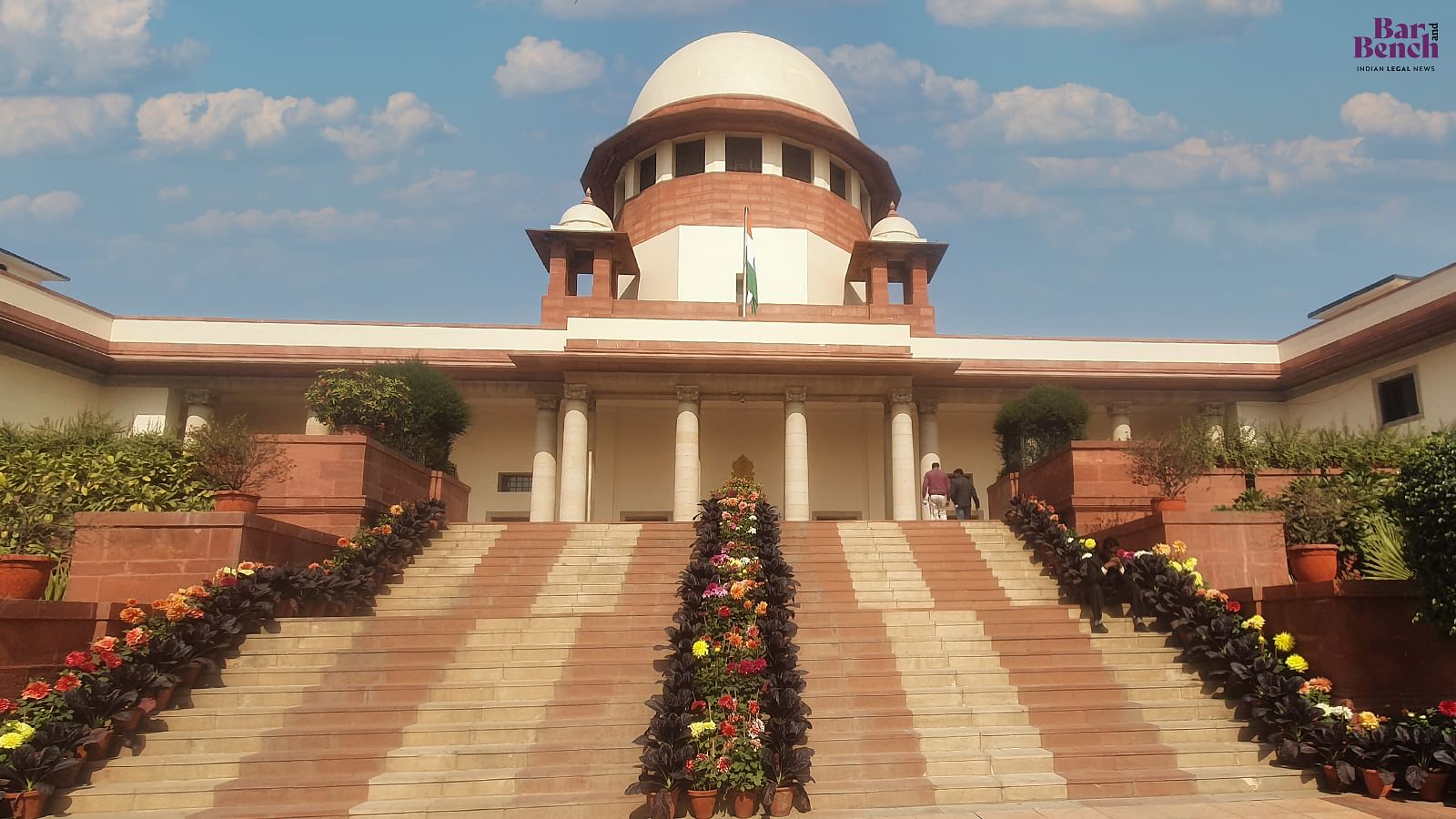Introduction
While ruling specifically on a very significant legal point with far reaching ramifications, the Apex Court has in a most learned, laudable, landmark and latest judgment titled Government of Kerala & Anr vs Joseph & Ors in Civil Appeal 3142 of 2010 and cited as 2023 INSC 693 in the exercise of its civil appellate jurisdiction that was pronounced as recently as on August 9, 2023 in a case pertaining to the land dispute has categorically observed that merely a long period of possession, does not translate into the right of adverse possession. It must be mentioned here that the Court was dealing with an appeal against the judgment passed by the Kerala High Court by which the findings returned in the First Appeal by the District Judge were overturned and the land, the subject matter of dispute was stated to be rightfully belonging to the respondents by virtue of principles of adverse possession. The two Judge Bench comprising of Hon’ble Mr Justice Abhay S Oka and Hon’ble Mr Justice Sanjay Karol have rightly maintained that, “An estimation of age of the trees cannot be, by any stretch, termed as sufficient proof required to disturb the title that undisputedly rests with the Government as also testified by PW-1 and PW-2. Proper and concrete proof as required would need for the claimants to show some proof of possession, other than statements which may be vague. It is also clear from the above discussion that merely a long period of possession, does not translate into the right of adverse possession.”
We must note that the Bench of Apex Court said that surmises, conjectures and approximations cannot serve as the basis for taking away the right over land resting with the State and placing the said bundle of rights in the hands of one who did not have any such rights. The Court opined that as per the testimonies, consistency is lacking in terms of the age of the rubber trees as certain witnesses claim the age to be 15 years while others claim the same to be 18 years. The Court held that the rubber trees were planted just about 15 to 18 years prior to the date on which the depositions were recorded.
Of course, the Court also noted that the Tehsildar had passed an order directing the claimant to not only vacate the land but also to pay compensation amounting to Rs 354/- and that such facts were never referred to in the plaint. Therefore, in the fitness of things, we see that the Apex Court thus after analyzing the overall case concluded that the findings returned by the High Court holding the witnesses to have established the claimants by way of adverse possession is erroneous. So resultantly we see that the Apex Court allowed the appeal, set aside the impugned judgment of the High Court and restored the judgment of the First Appellate Court.
At the very outset, this brief, brilliant and balanced judgment authored by Hon’ble Mr Justice Abhay S Oka for a Bench of the Apex Court comprising of himself and Hon’ble Mr Justice Sanjay Karol sets the ball in motion by first and foremost putting forth in para 1 that, “This appeal assails a judgement and order passed by the High Court of Kerala dated 5th August, 2009 in Second Appeal No.740 of 1995 by which the findings returned in the First Appeal dated 3rd April, 1995, by the District Judge, Thodupuzha, in Appeal Suit No. 3 of 1991 were overturned and the land, subject matter of dispute, was stated to be rightfully belonging to the Respondents herein, namely Joseph, by virtue of the principle of adverse possession.”
Background
To put things in perspective, the Bench envisages in para 2 that, “The property, subject matter of dispute, measures 30 cents bearing survey Nos.545/7/1, 545/8A2 and 545/8B3 of Kudayathoor village. The said property is stated to be Government Puramboke land. Such fact appears to be undisputed. The case put forward by the respondents, (claimants of adverse possession) (Hereafter referred as Claimants) against which the present appeal stands filed, is that Joseph had acquired title to the land of which he had been in possession and in continued enjoyment of, since 1940.”
As we see, the Bench then brings out in para 3 that, “The Tahsildar, District Thodupuzha, issued notice to the claimants for unauthorised occupation of Government land on 20th February 1982, and thus began the long-standing litigation that is before us. Joseph-the original occupier passed away on 9th August 1982. The Assistant Collector, Idukki, vide order dated 11th March 1983 dismissed the appeal filed against the order of the Tahsildar.”
As it turned out, the Bench enunciates in para 4 that, “Legal representatives of the claimants filed a suit for injunction on 14th April 1983. The Court of the Munsiff allowed the suit on 31st July 1987 and on remand, vide order dated 16th December, 1989 from an appeal filed by the State, on the ground of the non-opportunity of production of evidence as also cross-examination of the witnesses for the State, confirmed its original decree with a judgement and order dated 21st July 1990.”
First Appeal
To be sure, the Bench then stipulates in para 5 that, “The question, the Court in its wisdom framed for its consideration was whether the plaintiffs (respondents herein) had made out a case for declaration and injunction and whether the decree passed by the Court below was sustainable or not.”
While elaborating, the Bench then further mentions in this same para 5 that, “5.1 It was observed that the injunction was clearly a response to the notice dated 3rd of May, 1982, therefore, it was hit by Section 20 of the Kerala Land Conservancy Act, 19572. The Act permits only those suits which are filed against an order under the said act in respect of lands that do not belong to the Government or are not puramboke land. The same was also hit by the Proviso to Section 20 which permits such suits to be filed within one year of the date of notice. In this regard, the notice in the present case was issued on 22nd February, 1982 and the suit was filed on 14th April, 1983 thereby being outside the permissible limit of one year.
5.2 It was observed that the witnesses produced by the plaintiffs were “rendering lip-service to the plaintiffs” and their testimonies in respect of the age of the trees planted on the disputed property varied greatly. No independent witness(es) or commission was taken to prove the age of the improvements made. A report relied on by the plaintiffs, takes note of improvements made on the disputed property, over 35 years ago and neither the report nor the person who prepared such report was before the Court.
5.3 Furthermore, it was observed that the plaintiffs could not adduce any evidence to prove their possession of the disputed property for more than the statutory period of 30 years. As per the of testimony of PW 1, the plaintiffs were residing on the land on the south of the disputed property before 1940. However, no other record was taken to prove the possession of the plaintiffs over the Government property.
5.4 It was observed that the title of the Government on land cannot be lost by placing reliance on “casual advertence” or on the basis of “scanty material”. It was then held that the classic requirement of adverse possession is that possession should be open, assertive, hostile and continuous. These requirements were absent in the case. Lastly it was held that just because it appears that the order of the Assistant Collector appears to have been passed as if Avira (son of Joseph, respondent herein) was alive, even though the legal representatives applied to be impleaded, it could not be expected of quasi-judicial authorities to follow the procedure for amendment of cause title with the same rigidness as observed by the Civil Court and that those seeking to be impleaded owed a duty to satisfy the Court as to what became of their application for impleadment. Just because the order has been presumedly passed against a person no longer in the world of living, does not give the representatives of the plaintiffs (respondents herein) to treat the same as nullity.
5.5 In such terms, the judgment and decree passed by the Trial Court dated 21st July, 1990 was set aside vide judgment and order dated 3rd April, 1995.”
Second Appeal-The Impugned Judgement
Further, the Bench then unravels in para 6 that, “The learned Court below in its judgement dated 5th August, 2009 examined the decisions that led to the appeal before it and held that the lower Appellate Court’s approach stating that the suit was barred by virtue of the Act was not a good law, as the suit filed by the respondents herein was a suit for declaration of perfected title by virtue of adverse possession and not, a challenge against the notice issued by the Tahsildar. The second aspect on which the High Court differs with the lower Appellate Court was on the point that the testimony of PWs1 to 6 stood unshaken. 6.1 It was observed that the Tahsildar, shorn of any basis had estimated the period of encroachment as 16 years as against the claim of 40 years. It was then held that on perusal of evidence as also other facts regarding the improvements in the property showed that the encroachment was done long before the L.C. proceedings in the suit.
6.2 It was concluded that the finding of there being no scope of adverse possession being given to the respondents herein is fallacious and is based on erroneous consideration of evidence. In that event, they would be entitled to the relief of adverse possession upon land which, as it stands recorded in the impugned judgement, they have been in possession for over 50 years.
6.3 In that view of the matter, the judgement of the Munsiff Court was upheld, granting the claimants adverse possession over the land in question and, overturning the judgement rendered by the Court of First Appeal.”
Do note, the Bench notes in para 27 that, “A perusal of the testimonies reveals that consistency is lacking in terms of the age of the rubber trees. Certain witnesses claim the age to be 15 years while others claim the same to be 18 years.”
Most significantly, the Bench mandates in para 28 holding that, “In first appeal, the Court noted that no independent commission, or verification had been carried out of the age of the trees on the basis of which possession was being calculated. In view of this uncontroverted position, whether the standard of proof as held by this Court in Harphool Singh (supra) in no uncertain terms –
“When the property was a vacant land before the alleged construction was put up, to show open and hostile possession which could alone in law constitute adverse to the State, in this case, some concrete details of the nature of occupation with proper proof thereof would be absolutely necessary and mere vague assertions cannot by themselves be a substitute for such concrete proof required of open and hostile possession.” (Emphasis supplied)
cannot be termed as met. An estimation of age of the trees cannot be, by any stretch, termed as sufficient proof required to disturb the title that undisputedly rests with the Government as also testified by PW-1 and PW-2. Proper and concrete proof as required would need for the claimants to show some proof of possession, other than statements which may be vague. It is also clear from the above discussion that merely a long period of possession, does not translate into the right of adverse possession. Surmises, conjectures and approximations cannot serve the basis for taking away the right over land resting with the State and place the said bundle of rights in the hands of one who did not have any such rights.”
Truth be told, the Bench states in para 29 that, “It is a matter of record that proceedings of ejectment of the claimant stood initiated before the concerned Tehsildar in which claimant neither pleaded nor claimed title by way of adverse possession. To the contrary, the unauthorised occupation was not disputed, with the only plea being taken of having planted certain trees (rubber trees), put to use for rubber tapping.”
Be it noted, the Bench notes in para 30 that, “It is also a matter on record that such proceedings stood concluded by the appropriate authority (Tehsildar). By order dated 24th February, 1982 the appropriate authority (Tehsildar) had passed an order directing the claimant to not only vacate the land but also to pay compensation amounting to Rs. 354/-; these facts were never referred to in the plaint.”
It is also worth noting that the Bench notes in para 31 that, “The Assistant Collector, Idduki, unequivocally stated the reason for non-assignment of land to the claimants, for the same being set out for a public purpose. Noticeably, the order passed by the Tehsildar or the Assistant Collector was never ever subjected to challenge by the claimants either by resorting to the mechanism provided under the Act nor in the suit, the subject matter of consideration.”
Frankly speaking, the Bench acknowledges in para 32 that, “It is for the first time in the written statement that the factum of passing the order under The Act was brought to the notice of the Civil Court which fact was neither refuted to nor explained by way of replication.”
Furthermore, the Bench then specifies in para 33 that, “That apart, joint reading of the testimonies of PW1 (Brajeetha), PW3 (Cherian) and PW4 (Narayanan), do not in any manner establish the factum of the claimant having ever claimed the possession hostile to that of true owner i.e., the State.”
It cannot be glossed over that the Bench observes in para 34 that, “Their testimonies only establish plaintiffs/claimants’ possession and having put the land to use for planting trees, though with a variation of period, i.e., about 15 to 40 years. Be that as it may, it has come on record with some variations that the rubber trees were planted just about 15 to 18 years prior to the date on which the depositions were recorded.”
What also we cannot be oblivious of is then stated in para 35 that, “On oath, in a specific query put to PW 1 as to whether there is no record to establish suit the property to be in their possession from the year 1940 onwards, there is a categorical denial. Equally the witness denies having any proof of residing in the property, since 1940, adjacent to the property subject matter of the suit.”
Adding more to it, the Bench points out in para 36 that, “All that it is stated is that the property was being enjoyed, assuming the same to be theirs.”
As a corollary, the Bench holds in para 37 that, “It is in this view of the matter, we find that the findings returned by the High Court holding the witnesses, more particularly PW1 to PW5 to have established the claimants’ claims by way of adverse possession to be erroneous.”
Resultantly, the Bench directs in para 38 that, “In view of the above, the appeal is allowed. The judgement of the High Court in S.A. 740 of 1995 dated 5th August,2009 is set aside, and the judgement rendered by the First Appellate Court in Appeal Suit No. 3 of 1991 dated 3rd April, 1995 is restored.”
In sum, we thus see that the Apex Court has made it indubitably clear that mere long period of possession does not translate into right of adverse possession. It thus merits no reiteration that proper and concrete proof is required for long period of possession getting translated into right of adverse possession. All the courts must definitely always bear this in mind while ruling in such intricate cases!

















